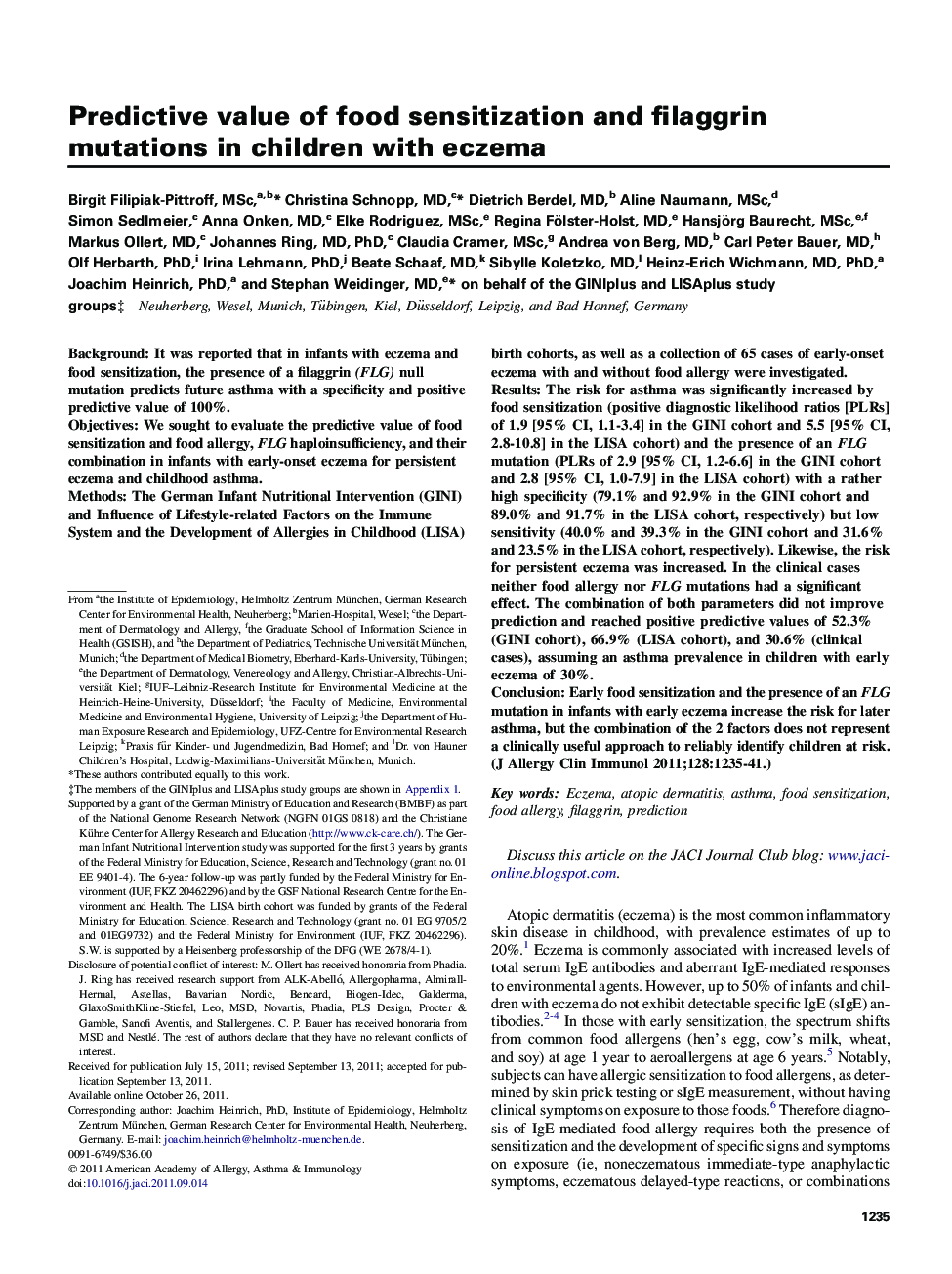| کد مقاله | کد نشریه | سال انتشار | مقاله انگلیسی | نسخه تمام متن |
|---|---|---|---|---|
| 6067182 | 1201908 | 2011 | 12 صفحه PDF | دانلود رایگان |

BackgroundIt was reported that in infants with eczema and food sensitization, the presence of a filaggrin (FLG) null mutation predicts future asthma with a specificity and positive predictive value of 100%.ObjectivesWe sought to evaluate the predictive value of food sensitization and food allergy, FLG haploinsufficiency, and their combination in infants with early-onset eczema for persistent eczema and childhood asthma.MethodsThe German Infant Nutritional Intervention (GINI) and Influence of Lifestyle-related Factors on the Immune System and the Development of Allergies in Childhood (LISA) birth cohorts, as well as a collection of 65 cases of early-onset eczema with and without food allergy were investigated.ResultsThe risk for asthma was significantly increased by food sensitization (positive diagnostic likelihood ratios [PLRs] of 1.9 [95% CI, 1.1-3.4] in the GINI cohort and 5.5 [95% CI, 2.8-10.8] in the LISA cohort) and the presence of an FLG mutation (PLRs of 2.9 [95% CI, 1.2-6.6] in the GINI cohort and 2.8 [95% CI, 1.0-7.9] in the LISA cohort) with a rather high specificity (79.1% and 92.9% in the GINI cohort and 89.0% and 91.7% in the LISA cohort, respectively) but low sensitivity (40.0% and 39.3% in the GINI cohort and 31.6% and 23.5% in the LISA cohort, respectively). Likewise, the risk for persistent eczema was increased. In the clinical cases neither food allergy nor FLG mutations had a significant effect. The combination of both parameters did not improve prediction and reached positive predictive values of 52.3% (GINI cohort), 66.9% (LISA cohort), and 30.6% (clinical cases), assuming an asthma prevalence in children with early eczema of 30%.ConclusionEarly food sensitization and the presence of an FLG mutation in infants with early eczema increase the risk for later asthma, but the combination of the 2 factors does not represent a clinically useful approach to reliably identify children at risk.
Journal: Journal of Allergy and Clinical Immunology - Volume 128, Issue 6, December 2011, Pages 1235-1241.e5